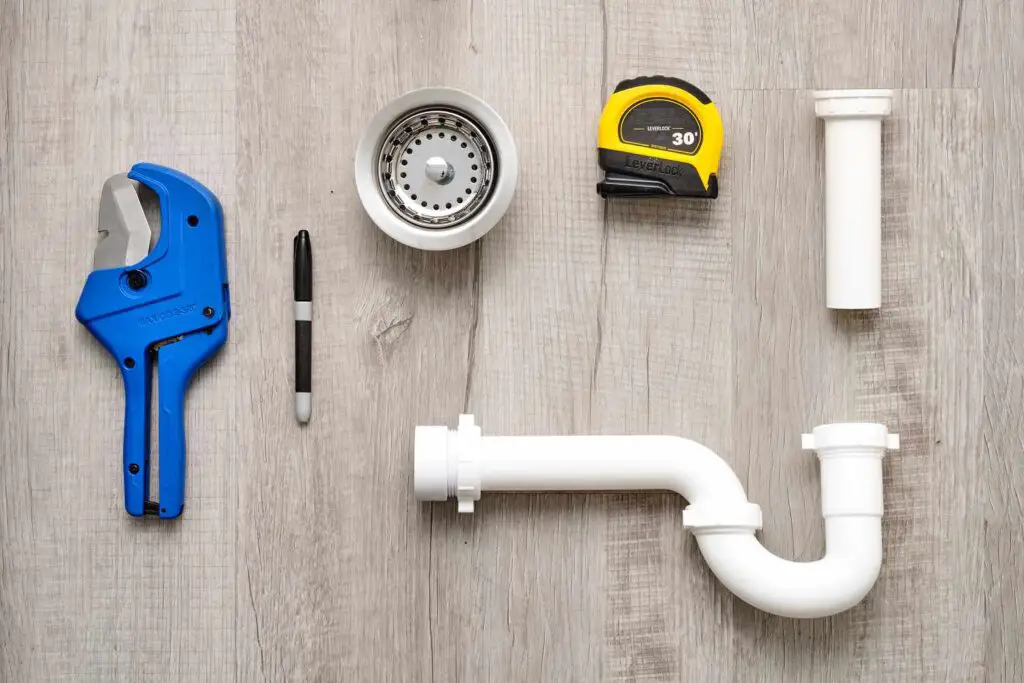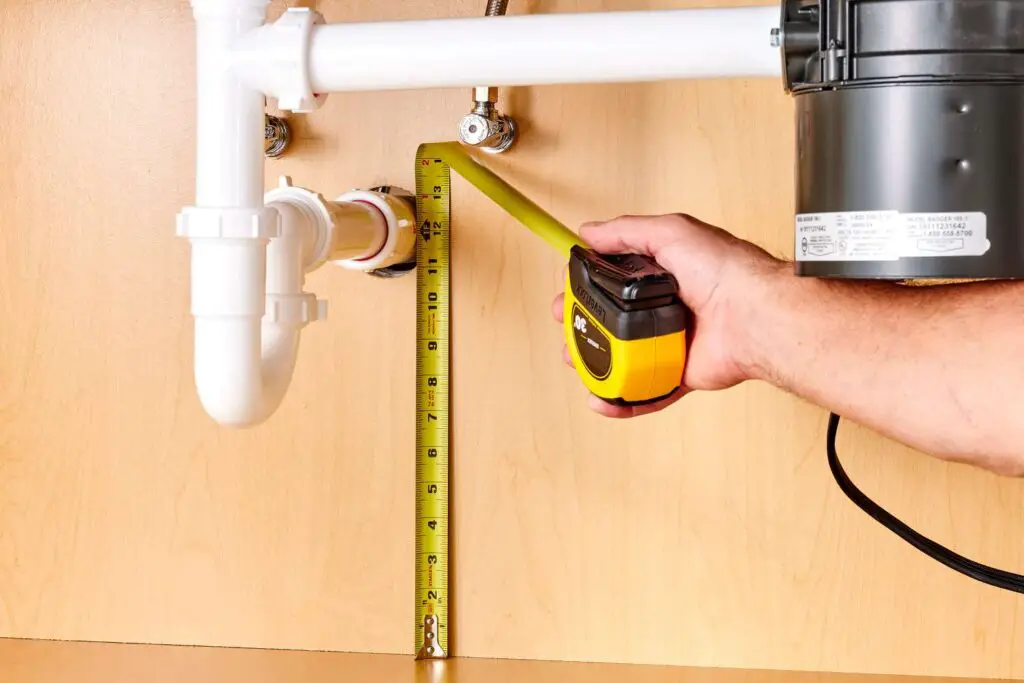When it comes to replacing or repairing your sink drain, one of the most important steps is to correctly measure the drain size. This will help ensure that you choose the right replacement part and avoid any leaks or other issues. But how exactly do you measure sink drain size?
In this ultimate guide, we’ll show you everything you need to know about how to measure sink drain size, including how to measure sink drain pipe size and other important factors to consider.
How to Measure Sink Drain Size
Knowing how to measure sink drain size is important when it comes to purchasing a new sink or replacing an old drain. Determining the right size ensures a snug fit and prevents leaks. The size of your sink drain can vary depending on the type and model of the sink you have.
In this ultimate guide, we’ll walk you through the steps on how to measure sink drain size and how to measure sink drain pipe size, so you can easily find the right replacement or upgrade for your sink
Related: 10 Best Double Bowl Kitchen Sinks
Tools Needed for Measuring Sink Drain Size

Accurately measuring your sink drain size is crucial when it comes to making plumbing-related decisions. By having these tools readily available, you’ll be well-equipped to measure your sink drain size accurately. This knowledge empowers you to make informed decisions regarding repairs, replacements, or upgrades to your plumbing system. To ensure precision, there are a few essential tools you’ll need in your toolkit.
Measuring Tape:
This tool is indispensable for measuring the diameter of your sink drain. It allows you to determine the exact size of the opening where the drain is installed.
Calipers:
For precise measurements, especially in tight spaces, calipers come in handy. These versatile tools enable you to measure the diameter or circumference of the drain more accurately than a measuring tape alone.
Pipe Wrench:
While not directly used for measuring, a pipe wrench is essential for removing and installing various components of the sink drain. It provides a secure grip, making it easier to work with the plumbing system.
Plumber’s Putty:
This pliable substance is utilized to create a watertight seal around the drain components. It prevents leaks and ensures proper functioning of the sink drain.
Measuring the diameter of your sink drain
Accurately measuring the diameter of your sink drain is essential for various plumbing tasks, such as replacing a drain stopper or selecting the right-sized accessories. This simple yet vital step saves you time, money, and frustration in the long run, ensuring a well-functioning plumbing system in your kitchen or bathroom. Fortunately, the process is straightforward and requires only a few simple steps.
Gather the necessary tools:
To measure the sink drain size, you’ll need a measuring tape, calipers, or a diameter tape. These tools ensure precise measurements.
Remove any obstructions:
Clear the sink area of any debris, dishes, or utensils to access the drain easily.
Locate the drain opening:
The drain opening is usually located at the bottom center of the sink. It’s the point where water and waste exit the sink.
Measure the drain:
Place the measuring tape or calipers across the widest part of the drain opening, ensuring it passes through the center. Take note of the measurement.
How to measure the length of your sink drain

Accurately measuring the length of your sink drain is essential when it comes to replacing or extending the plumbing components. This eliminates the hassle of purchasing components that are too long or too short, saving you time and frustration. By following a few simple steps, you can ensure that you get the right-sized parts for your project.
Clear the area:
Start by removing any items stored under the sink to have unobstructed access to the drain pipe.
Locate the drain pipe:
Identify the section of the drain pipe that extends downward from the sink bowl. It is typically visible beneath the sink and connects to the P-trap.
Choose a reference point:
Select a specific spot on the drain pipe from where you will begin measuring. This can be where the pipe connects to the sink bowl or any other noticeable point.
Measure the length:
Use a measuring tape or a flexible plumber’s measuring tape to measure the distance from the chosen reference point to the end of the drain pipe. Wrap the tape around the curve of the pipe for accuracy and make sure it is taut.
Determining the type of sink drain you have

By identifying the specific type, you can ensure compatibility when selecting new parts or troubleshooting any issues and you can confidently proceed with maintenance, repairs, or upgrades. Here are a few key steps to help you determine your sink drain type.
Visible features:
Examine the visible parts of your sink drain. Some common types include pop-up drains, grid strainer drains, and lift-and-turn drains. Take note of any unique features or mechanisms you observe.
Related: Best Copper Sinks
Operational characteristics:
Pay attention to how your sink drain operates. Does it have a lever or knob that controls the stopper? Or does it require manual lifting or twisting? Understanding the operational characteristics will help in identifying the correct type.
Research and comparison:
Conduct research or consult a professional to compare your observations with known sink drain types. Online resources, manufacturer websites, or plumbing experts can provide valuable information and visual references for identification.
Related: The 5 Best Stainless Steel Farmhouse Sinks for Your Kitchen
Understanding standard sink drain sizes
When it comes to plumbing, understanding the standard sizes of sink drains is essential for various tasks, including replacements, upgrades, or repairs. It ensures compatibility, efficient functionality, and a hassle-free experience in dealing with sink drain-related tasks. Here are some key points to help you navigate the world of sink drain sizes.
Diameter measurements:
Sink drains typically come in two standard sizes: 1 ¼ inches and 1 ½ inches. To measure the diameter accurately, use a measuring tape or calipers across the widest part of the drain opening.
Compatibility and interchangeability:
Knowing the standard sizes enables you to select replacement parts or accessories that are compatible with your sink. It ensures a proper fit and prevents issues like leaks or inefficient drainage.
Consider the sink type:
Different sinks may have varying drain sizes based on their design and purpose. Kitchen sinks, bathroom sinks, and utility sinks may have specific requirements. It’s essential to understand the specific needs of your sink type.
Consult a professional:
If you’re unsure about measuring or selecting the right size, it’s always a good idea to consult a professional plumber. They can provide expert guidance and ensure accurate measurements for your specific sink.
Related: Discover the Best RV Kitchen Sinks of 2023
Common problems that arise from incorrect sink drain measurements
Accurate measurements of your sink drain size are crucial to avoid common problems that can arise from incorrect measurements. Failing to measure the sink drain properly can lead to various issues that affect the functionality and efficiency of your plumbing system. Here are some problems that can occur:
Leakage:
An ill-fitting or incorrectly sized drain can result in leaks, leading to water damage and potential mold growth. It’s essential to measure the sink drain accurately to ensure a proper seal and prevent leakage.
Clogging:
Incorrect measurements may result in a drain that is too narrow, increasing the likelihood of clogs. This can lead to water backup, slow drainage, and the need for frequent unclogging.
Inefficient drainage:
If the drain size is too small, it can hinder the flow of water and waste. This can cause standing water in the sink and make it difficult to perform daily tasks efficiently.
Compatibility issues:
Incorrect measurements can lead to purchasing the wrong-sized replacement parts or accessories. This can result in frustration, as the components won’t fit properly or function as intended.
To avoid these problems, it is crucial to understand how to measure sink drain size accurately. Taking the time to measure correctly ensures a well-functioning plumbing system, prevents costly repairs, and allows for a hassle-free experience in maintaining your sink drain.
Why it’s Important to Measure your Sink Drain Size
When it comes to the plumbing system in your home, even the smallest components can have a significant impact on its overall functionality. One such component is the sink drain, which plays a crucial role in ensuring proper drainage of water and waste. Understanding how to measure sink drain size is essential for a variety of reasons.
Firstly, knowing the precise dimensions of your sink drain enables you to select the right replacement parts or accessories when needed. Whether it’s a new drain stopper, a strainer, or a pipe extension, having the correct measurements will ensure a proper fit and prevent leaks or inefficient drainage.
Additionally, measuring your sink drain size allows you to make informed decisions when purchasing a new sink or considering a remodel. By knowing the dimensions in advance, you can avoid the hassle of buying a sink that doesn’t align with your existing plumbing setup.

